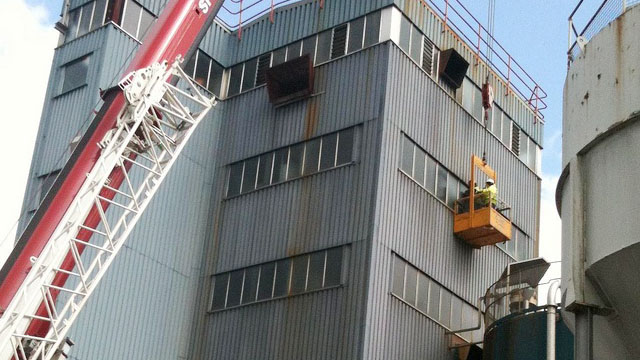July 19, 2011 1:55 PM CDT
FEM (Fédération Européenne de la Manutention) is the European manufacturers’ association for material handling equipment. In its position paper dated 16 May 2011 (document FEM CLE MC N 0284), the FEM Product Group for Cranes and Lifting Equipment states that: “Mobile cranes shall never be used for entertainment purposes, e.g. lifting of persons for shows, bungee jumping, dinner-in-the-sky or lifting of other structures with people on the structure or underneath (e.g. lifting of tents)! Mobile cranes are not intended to lift persons; they may be used to suspend personnel in man baskets only in unique work situations when it is the least hazardous way to do the job.”
The position paper echoes an earlier statement from the US-based AEM Power Crane and Shovel Association (PCSA), which states that: “Cranes are not designed, manufactured, or intended to handle personnel for either construction work or recreational activities. They are designed to lift objects, not people.”
The PCSA is one of the product groups of the Association of Equipment Manufacturers (AEM), which has more than 800 members. These statements come in response to a potentially dangerous trend where some entrepreneurs have used cranes to lift people to great heights for recreational purposes, such as dinner-in-the-sky and bungee jumping. Several crane manufacturers clearly prohibit such usage of equipment, as seen in these excerpts from crane operator manuals:
“The destined use of the crane is lifting of loads! Lifting of personnel is not considered to be destined use of the crane!” (Liebherr)
“Improper use includes… usage for any kind of sport or recreation event, especially for bungee jumping.” (Grove/Manitowoc Crane Group)
Welcoming the clarification from FEM, IPAF CEO Tim Whiteman said: “Purpose-built powered access equipment is an infinitely safer and more precise method of providing access to carry out temporary work at height. Compare this with a basket suspended from a single crane rope which may well blow around in the wind. As these manufacturers have made clear, cranes should be used for lifting loads, not people.”
Don’t Use Cranes to Lift People
IPAF welcomes FEM statement
By International Powered Access Federation

Don’t do this—a crane basket is not a safe way to lift people.
IPAF welcomes the position paper issued by the FEM Product Group for Cranes and Lifting Equipment, which states that cranes should not be used for lifting people, except in exceptional circumstances where safety requirements have been fulfilled and undertaken at the specific responsibility of the user.FEM (Fédération Européenne de la Manutention) is the European manufacturers’ association for material handling equipment. In its position paper dated 16 May 2011 (document FEM CLE MC N 0284), the FEM Product Group for Cranes and Lifting Equipment states that: “Mobile cranes shall never be used for entertainment purposes, e.g. lifting of persons for shows, bungee jumping, dinner-in-the-sky or lifting of other structures with people on the structure or underneath (e.g. lifting of tents)! Mobile cranes are not intended to lift persons; they may be used to suspend personnel in man baskets only in unique work situations when it is the least hazardous way to do the job.”
The position paper echoes an earlier statement from the US-based AEM Power Crane and Shovel Association (PCSA), which states that: “Cranes are not designed, manufactured, or intended to handle personnel for either construction work or recreational activities. They are designed to lift objects, not people.”
The PCSA is one of the product groups of the Association of Equipment Manufacturers (AEM), which has more than 800 members. These statements come in response to a potentially dangerous trend where some entrepreneurs have used cranes to lift people to great heights for recreational purposes, such as dinner-in-the-sky and bungee jumping. Several crane manufacturers clearly prohibit such usage of equipment, as seen in these excerpts from crane operator manuals:
“The destined use of the crane is lifting of loads! Lifting of personnel is not considered to be destined use of the crane!” (Liebherr)
“Improper use includes… usage for any kind of sport or recreation event, especially for bungee jumping.” (Grove/Manitowoc Crane Group)
Welcoming the clarification from FEM, IPAF CEO Tim Whiteman said: “Purpose-built powered access equipment is an infinitely safer and more precise method of providing access to carry out temporary work at height. Compare this with a basket suspended from a single crane rope which may well blow around in the wind. As these manufacturers have made clear, cranes should be used for lifting loads, not people.”
About the Author
IPAF is the parent organization of North America's Aerial Work Platform Training (AWPT). Both are not-for-profit member organizations that promote the safe and effective use of powered access equipment. Find more information at www.ipaf.org.


















